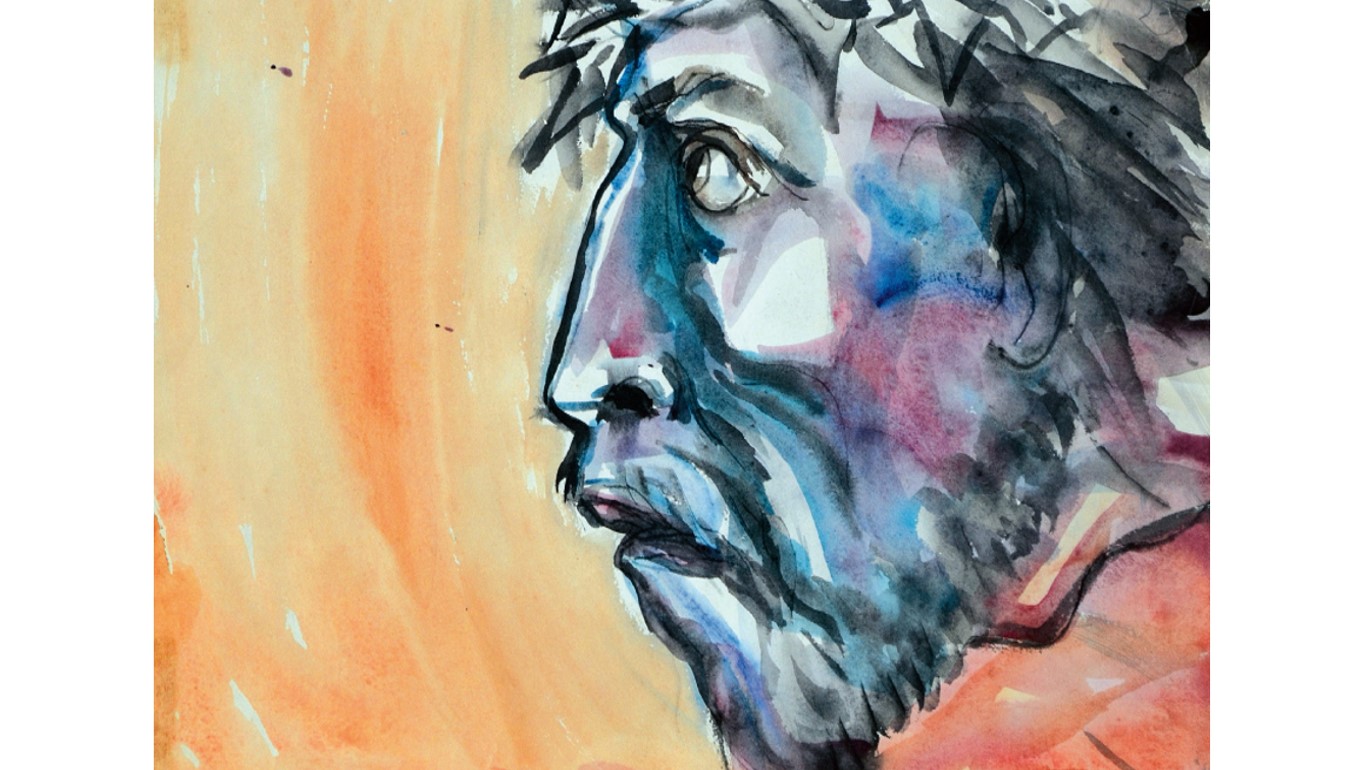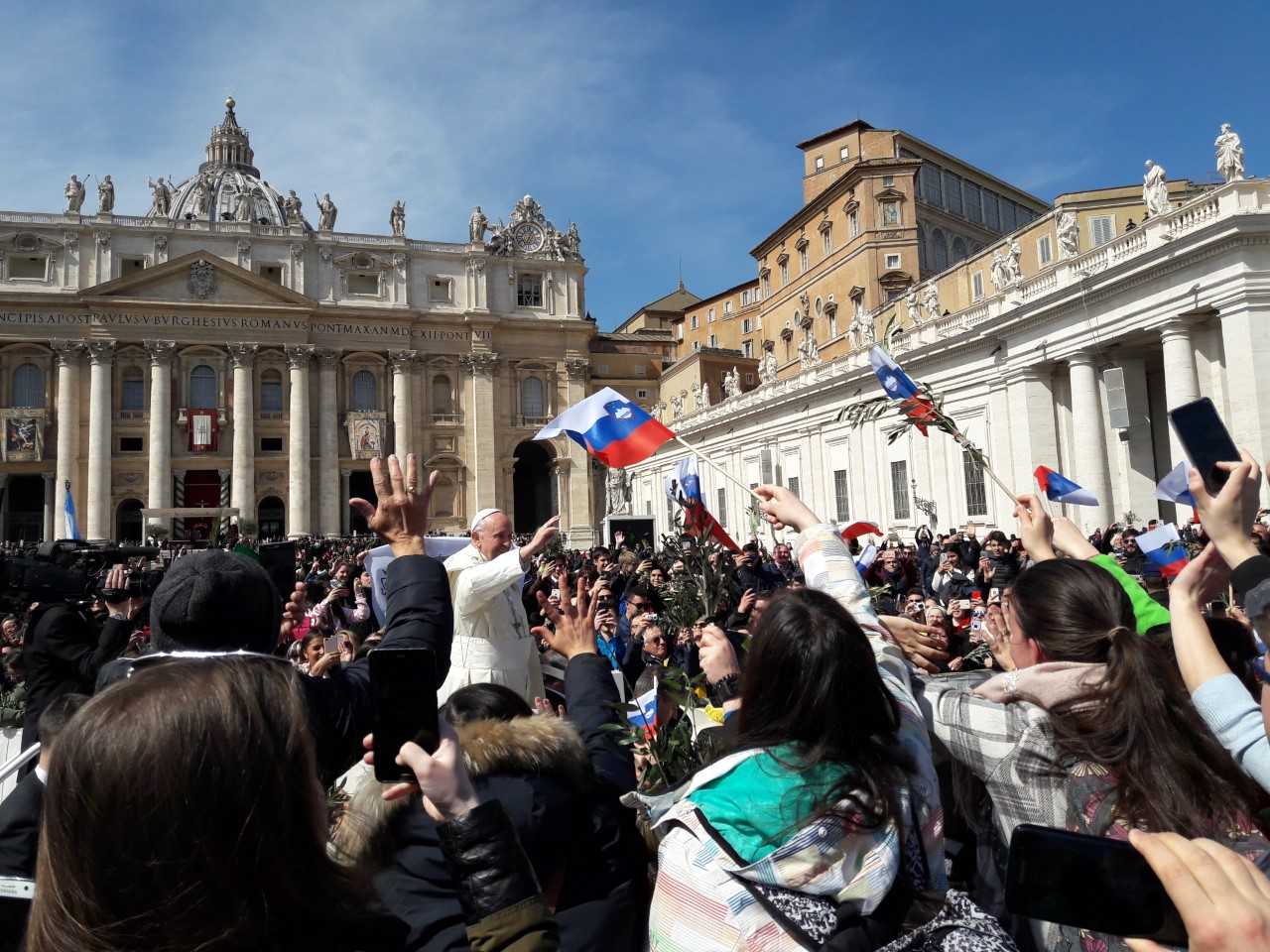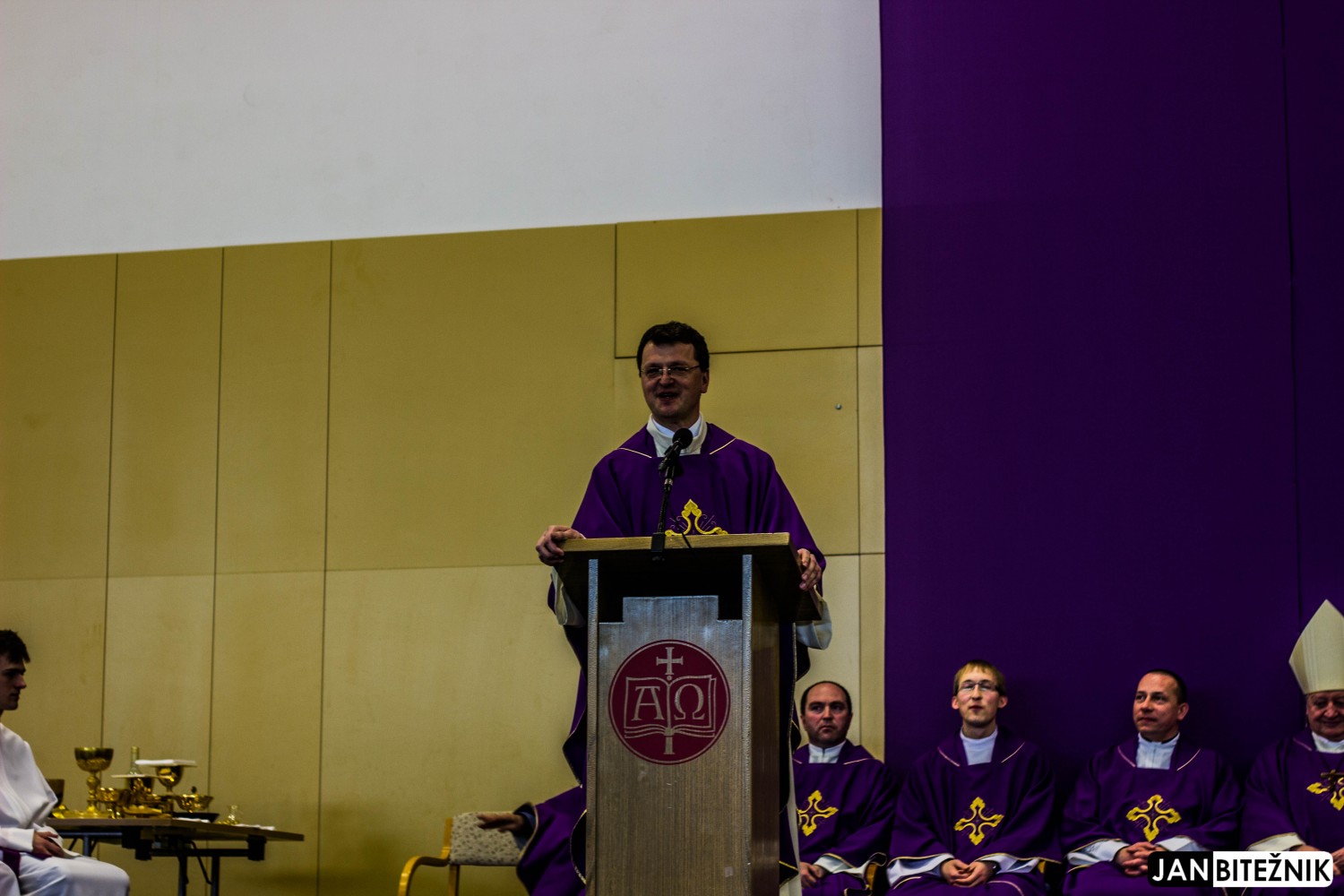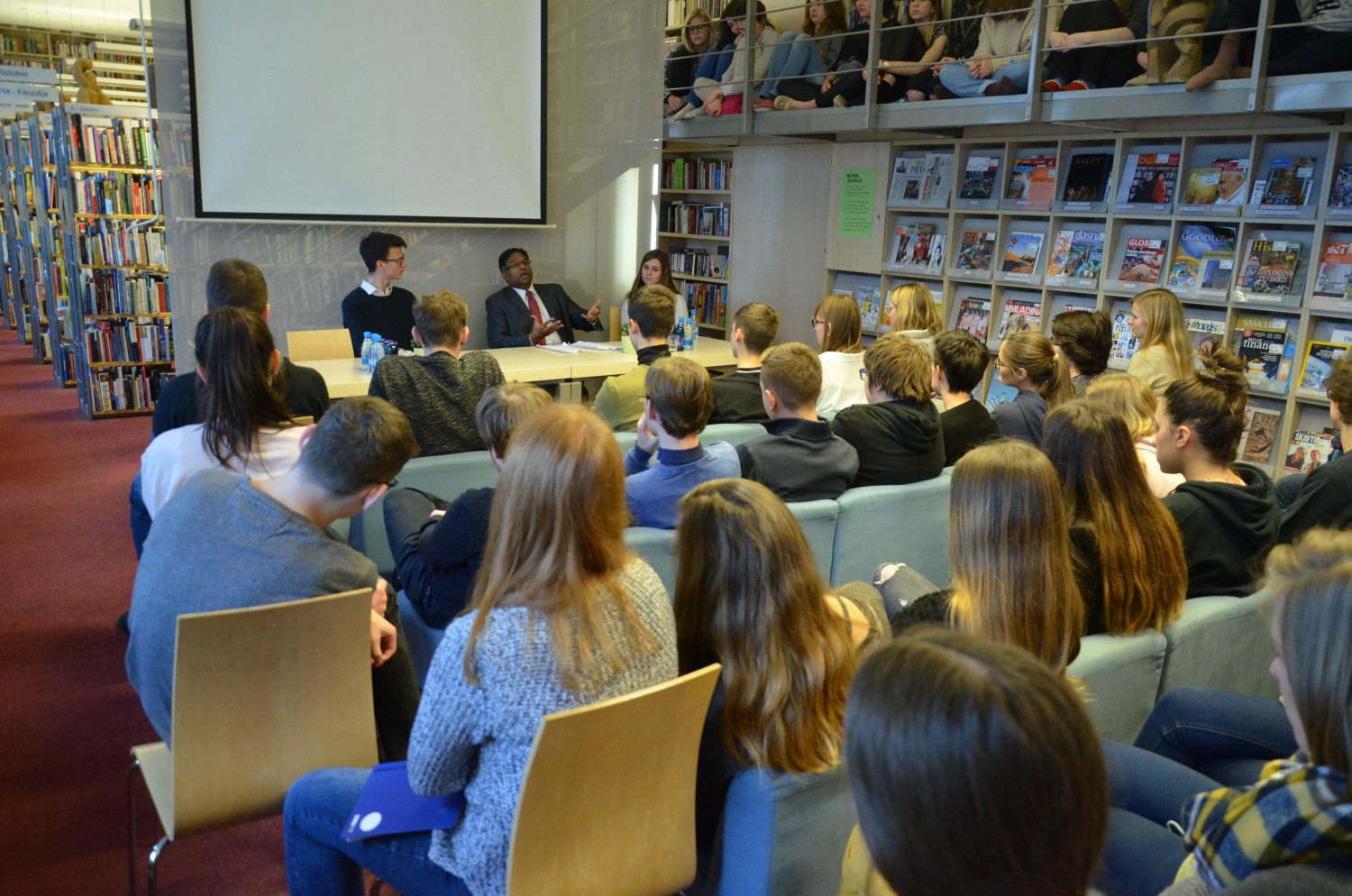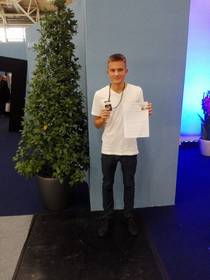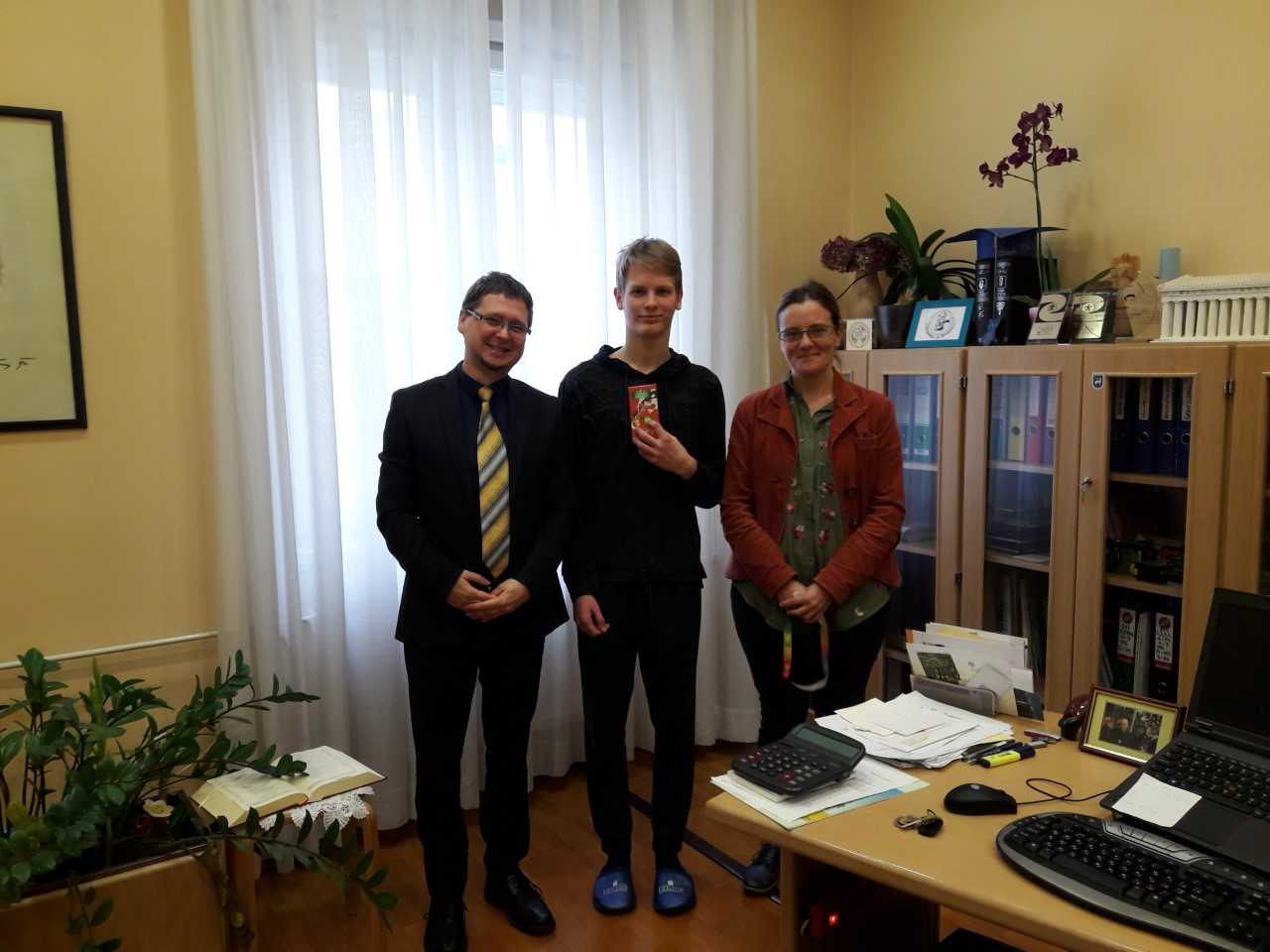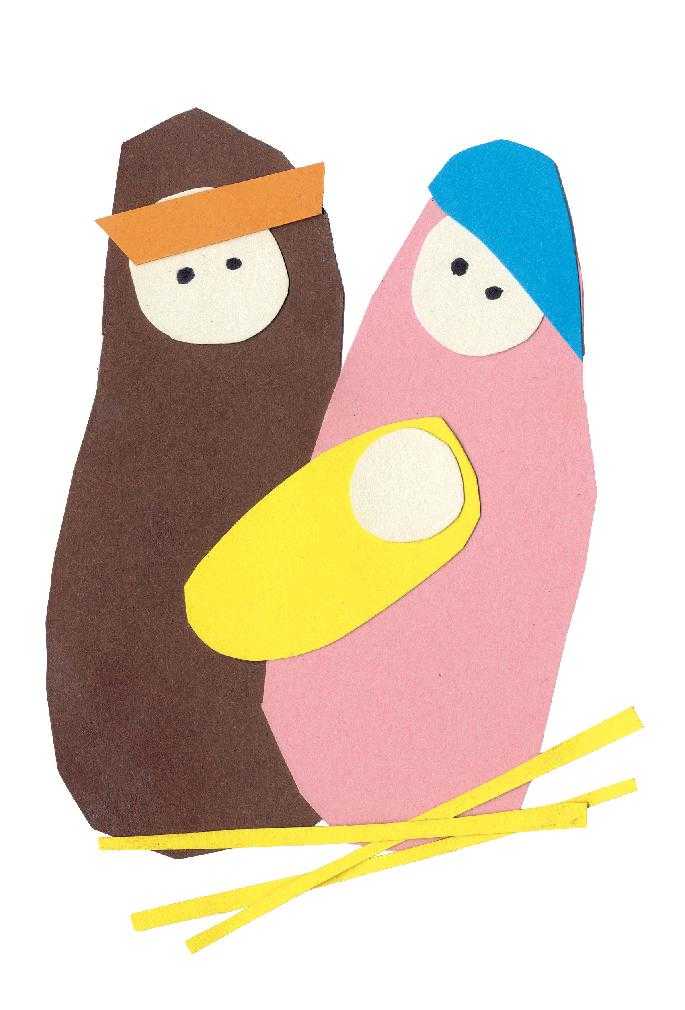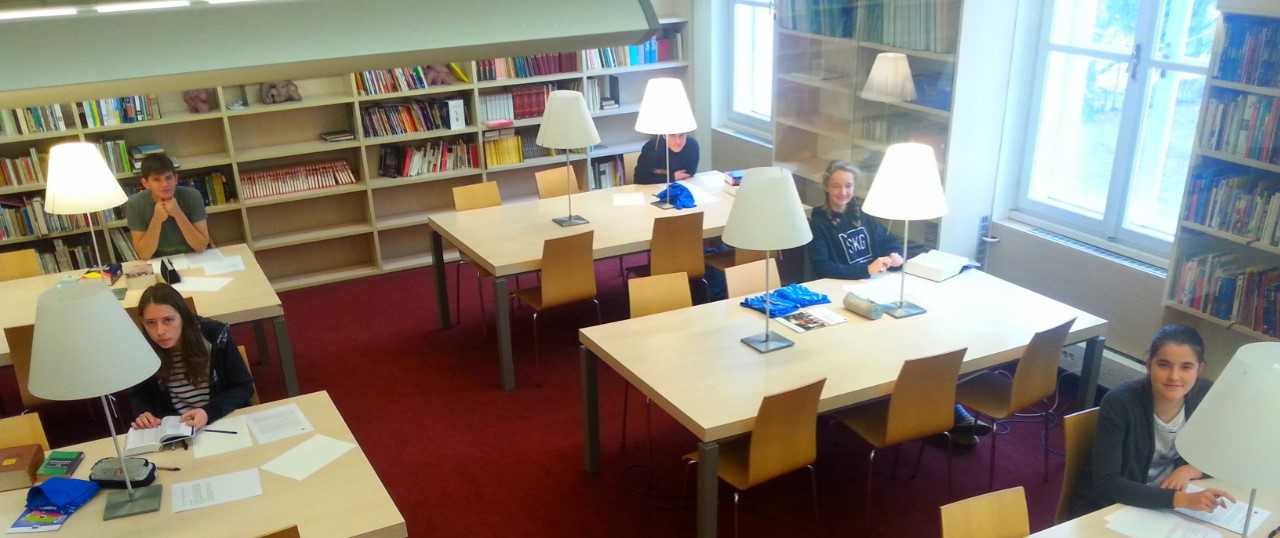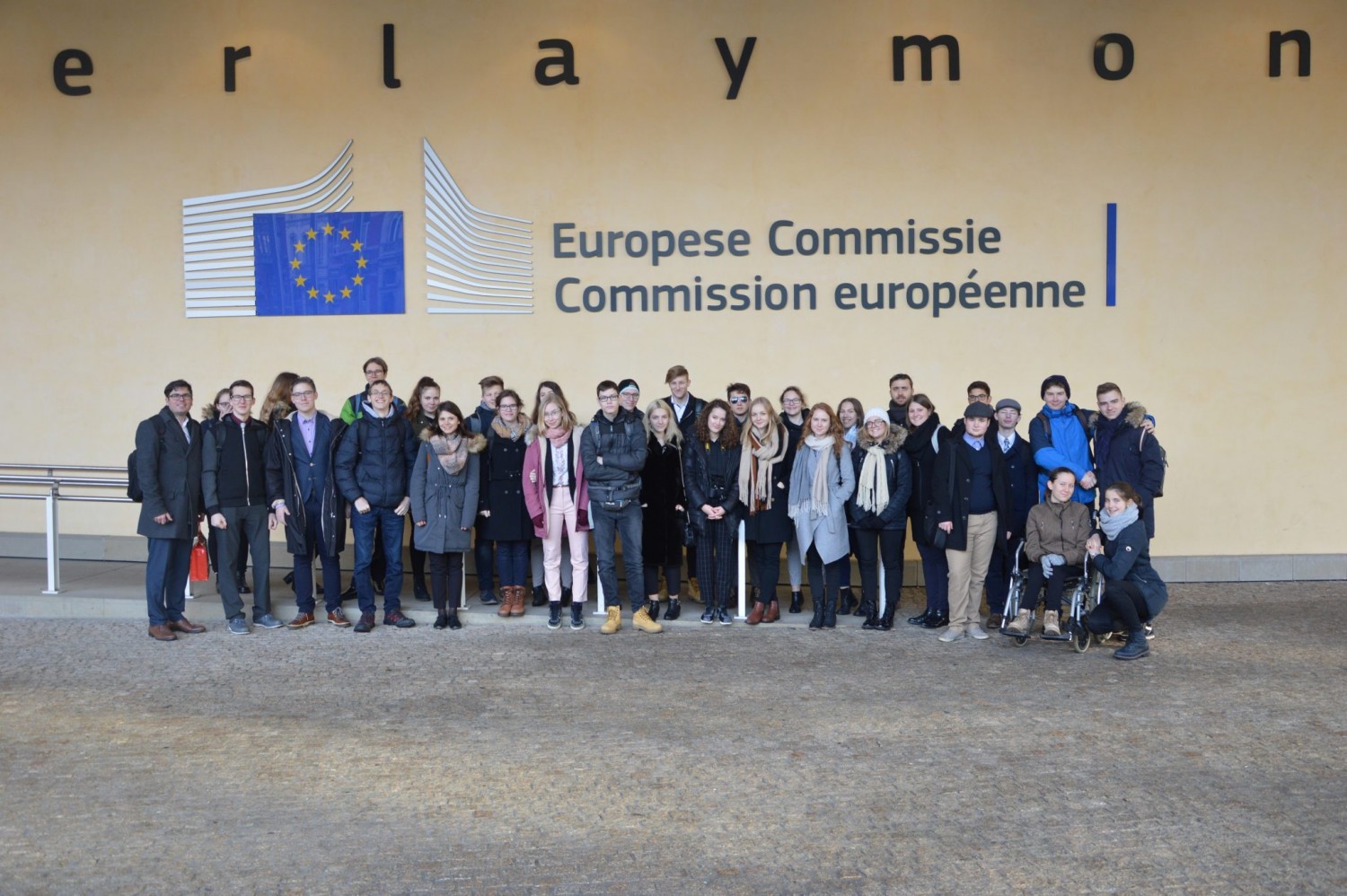
The visit took place from 4th – 7th March 2018 and included thirty students and Andrej Černigoj, one of the consultants of Lojze Peterle, Member of the European Parliament. The purpose of the excursion was to get acquainted with the functioning of the European Union. Every participant of the excursion had to present one part of Belgium or Brussels, which gave us a good insight of the country and city of our visit.
The first day was dedicated to the visit of the European quarter, which proved to be one of the highlights. Firstly, we visited a special memorial with the Slovene national anthem written on it in all the languages of the European Union. We were proud to sing the Slovene anthem. Afterwards we were given a speech by Jurij Mesec, who works in the representative body of Slovenia. Because we were right before the building of the European Council, our guide Andrej told us a bit about the council and its activities. The visit to the European Commission followed, where we were guided by the members of Violeta Bulc’ Cabinet, who is the European Commissioner for Mobility and Transport. We looked at the big hall, where we received answers to all of our questions concerning the internship and other job related enquiries. For the visit to the European Parliament we were greeted by members of Franc Bogovič’ office. He explained all about the daily routine in the Parliament and we also met Lojze Peterle, who gave a very inspiring speech. He talked about directing Slovenia onto the right path, that it seems not to be foun yet. Afterwards we also helped him choose the school that will visit Brussels next year under the sponsorship of his Cabinet. After that we visited two interactive museums, the first one being the House of European History. We very much liked this museum and only wished we had had more time to look through it thoroughly. The visit to Parlamentarium was even shorter, however, we managed to watch a very interesting interactive movie. For the end we visited Atomium, which is one of the symbols of Brussels. It charmed us with its size. In the evening we enjoyed a common dinner. On Tuesday morning we visited a beautiful medieval city called Brugge. It has a hint of Englishness, which we liked as much as its amazing chocolatiers. Afterwards we went to of the Northern Sea coast. We spent the afternoon in the center of Brussels. There we took a look at the main square and the peeing boy. Some of us spent some time tasting Belgian fries and famous waffles. But nothing compares to the Museum of cocoa and chocolate, where we indulged in all possible Belgian chocolates. To round up our excursion we also visited Waterloo. /Katarina Brezovar, year 3/
